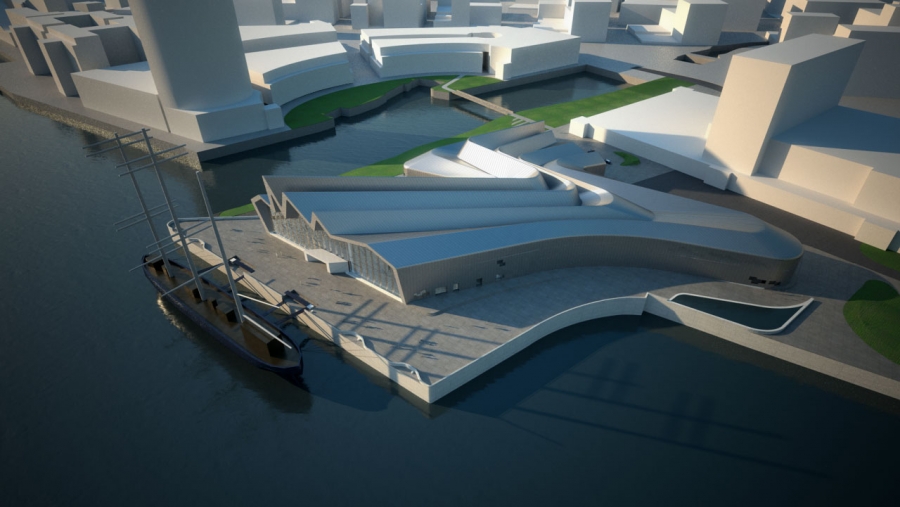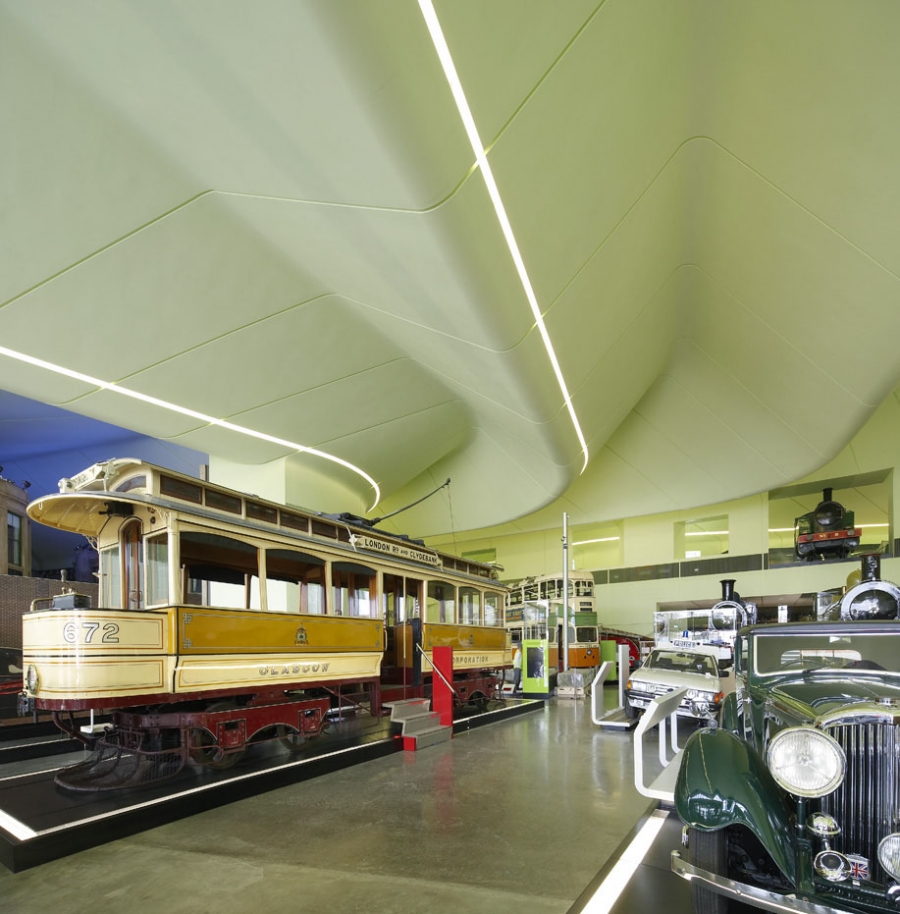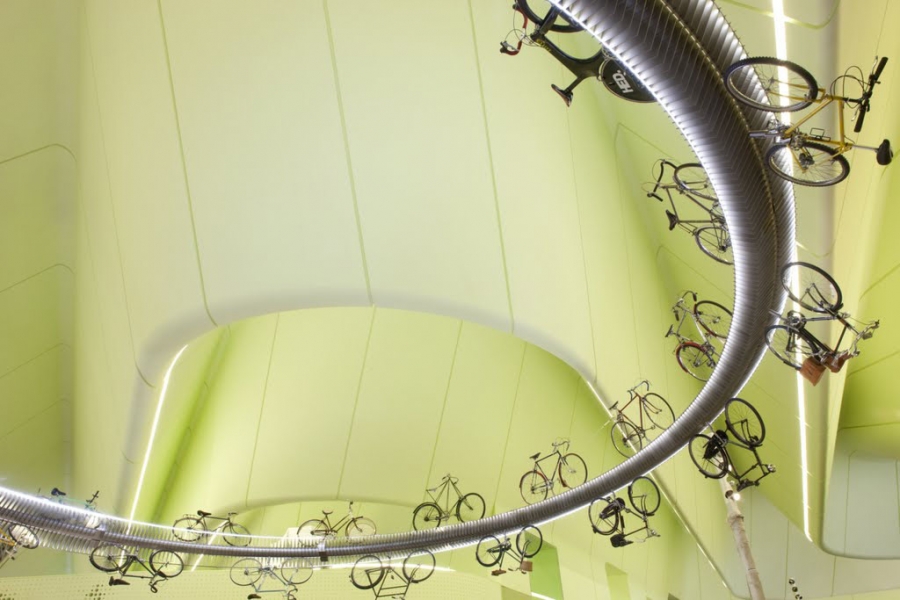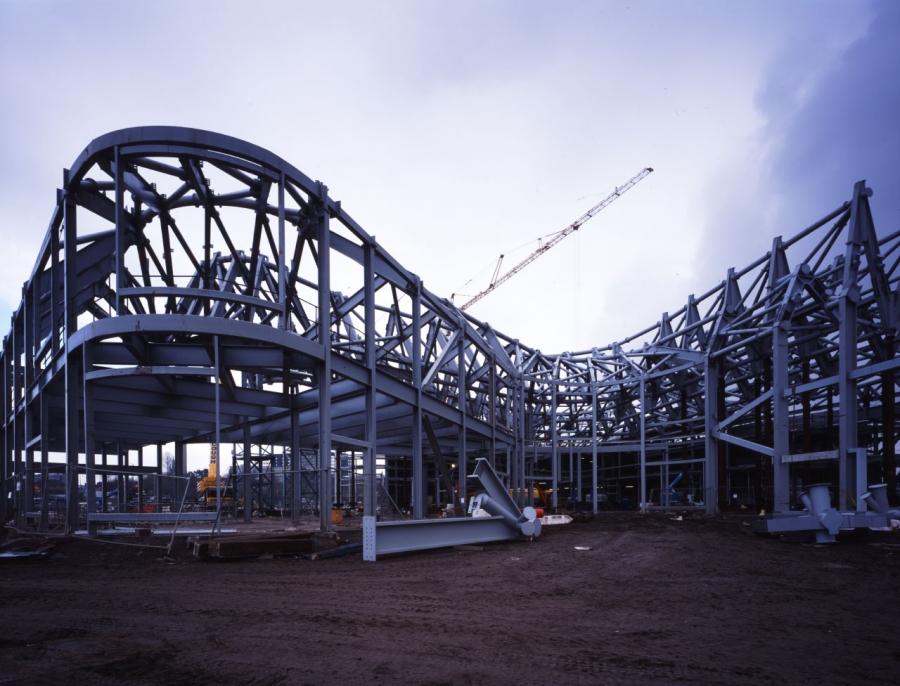Video
Second in a five-part series on Glasgow’s Riverside Museum, this article examines the building's structural engineering. International engineering firm Buro Happold provided structural engineering services. Follow Buildipedia throughout the month of March to read in-depth coverage of the Riverside Museum's various design and engineering systems.
Zaha Hadid is known for designing buildings with far-out forms. The recently completed Riverside Museum in Glasgow, Scotland, lives up to this reputation, featuring a zig-zagging profile in plan and section. Although seeming to defy gravity with its column-free spans, the building conceals some savvy structural maneuvers beneath its sleek skin of zinc. Engineering giant Buro Happold was the wizard behind the curtain.
A temple to transport and technology, the Riverside Museum showcases Glasgow’s rich history of shipbuilding beneath a dramatic, jagged roofline. The building’s form is akin to folding a piece of paper into pleats and then bending it twice – 120 degrees in opposite directions – along its length. Such maneuvers are easily accomplished with paper, but real-life constraints, including supporting the weight of building materials and resisting wind loads, call for careful calculations.
Buro Happold articulated the roof structure to function as a single unit that spans lengthwise like a rigid beam rather than crossways between side walls, explains Wolf Mangelsdorf, head of structural engineering. “We are accustomed to dissecting a structure into individual elements that perform different functions – a column, beam, secondary beam, or floor plate,” he points out, “but in this case, they all function together and you can’t take one piece away.”
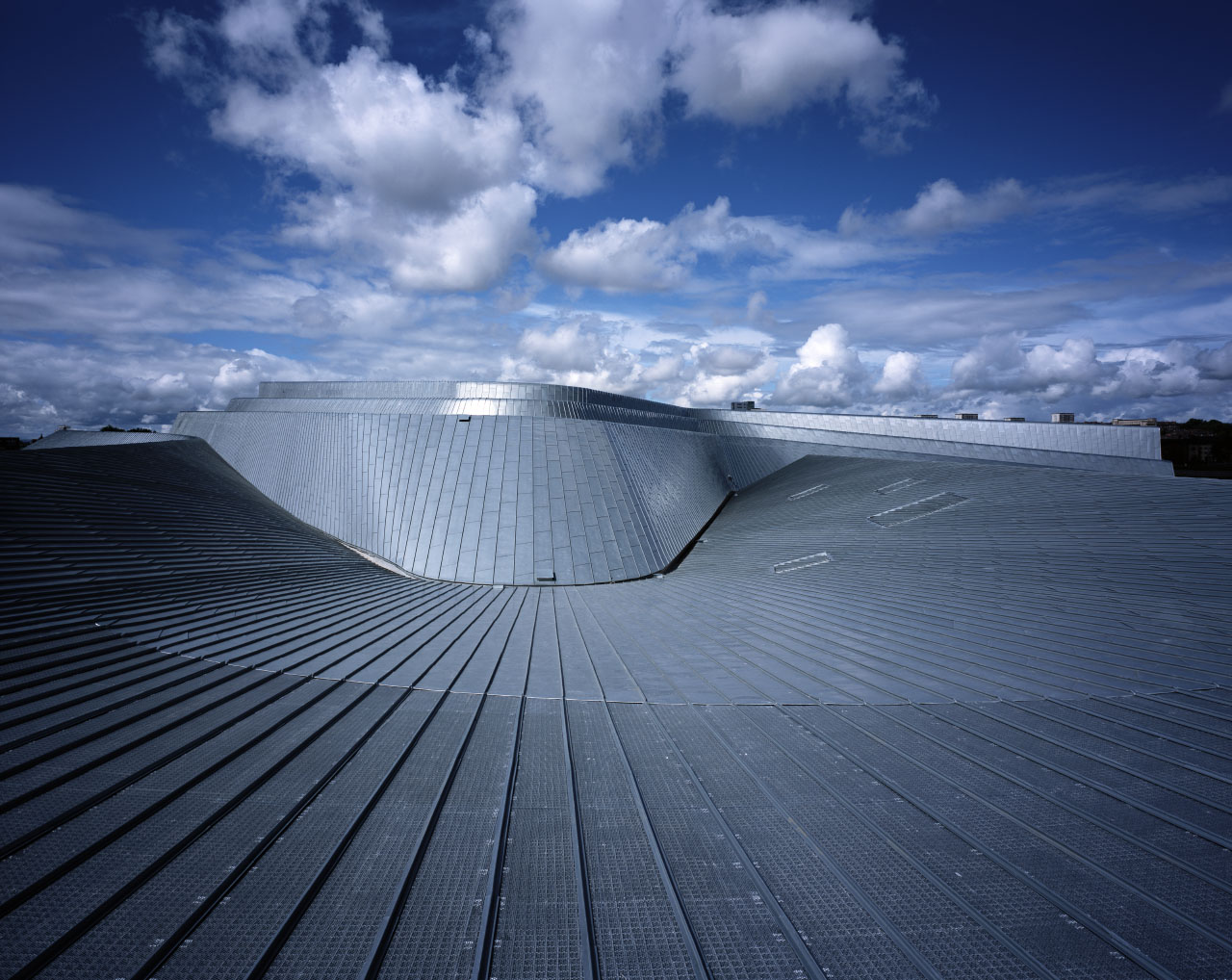
These integral pieces include a series of latticed trusses made of structural steel. Steel tubes form ridges and valleys that ultimately span a length of over 100 m (328'), including those two twists-and-turns. While typical A-frames rely on horizontal members to complete the "triangle" and provide stiffness, the engineers had to eliminate them in the Riverside Museum to preserve Hadid’s streamlined vision for the pleats. The inclination of the members themselves provides a stiffening effect.
The metal roof’s design offers some built-in tolerance, which allowed for push and pull throughout the design process. “The angles of the roof could be adjusted as we went along to accommodate programmatic shifts beneath without destroying the design’s overall concept,” explains Mangelsdorf. Ultimately, these folds must resist vertical loads, which could cause them to flatten out if not properly detailed.
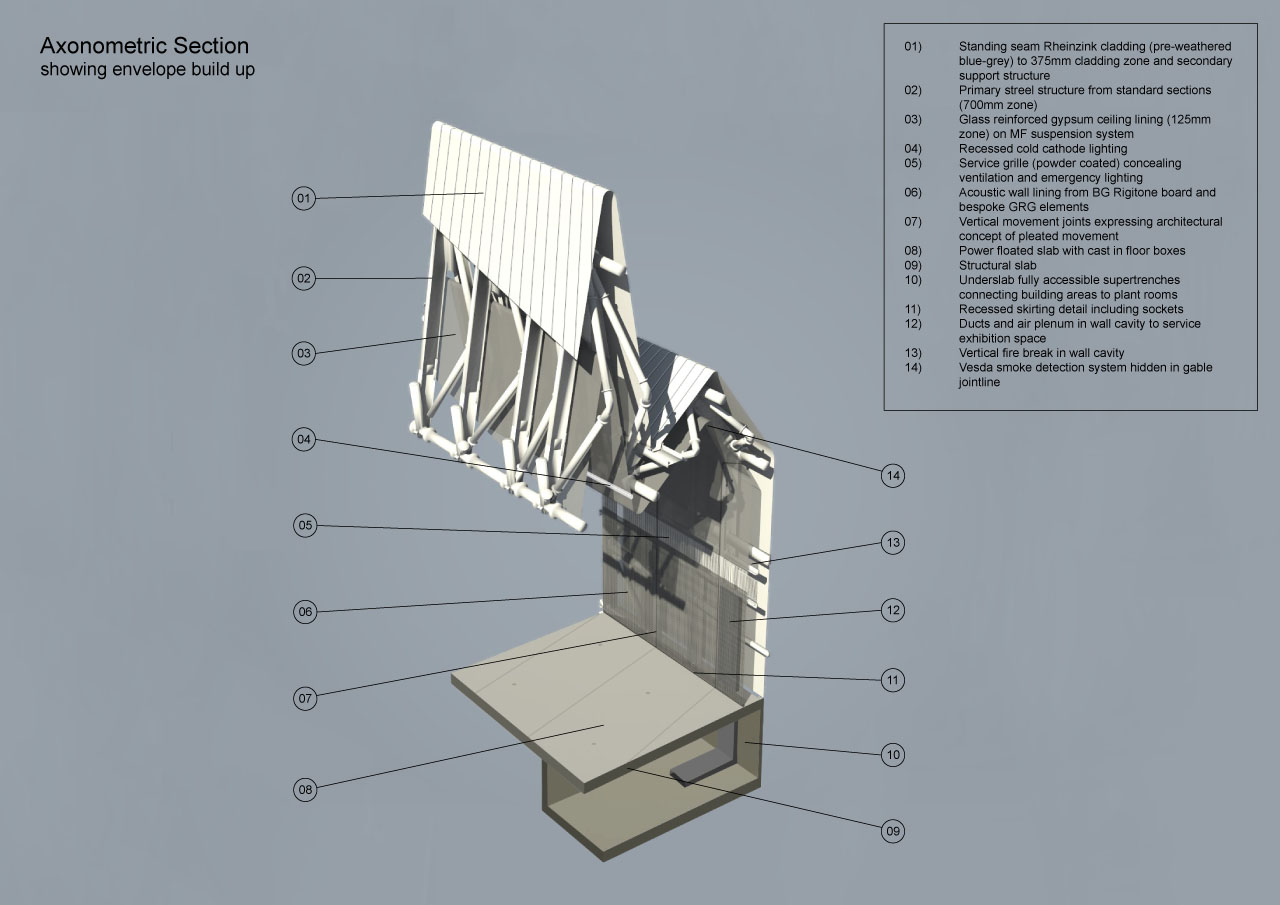
One load consideration is the weight of the roof itself: the steel members weigh 2,500 metric tons (over 5.5 million pounds) and they are topped with 185 metric tons (over 400,000 pounds) of zinc cladding. The architect's design called for an open interior to provide flexibility for ever-changing exhibitions, so internal columns were not an option. The engineers did place columns along the exterior walls to transfer the weight of the roof to the ground. These columns are spaced 6 m (19.7') on center with a depth of 700 mm (just over 2') and were designed with stiff connections. As well, the brackets on the columns support platforms that cantilever from the wall like shelves to create display space for the Riverside Museum’s collection of cars.
Another major load consideration was the force of the wind, which can gust in at over 100 mph from the Atlantic. The engineers conducted wind tunnel analyses on a physical model to accurately study how the wind pressure distribution would work and anticipate peak suctions and stresses at overhangs. They placed portal frames and cross bracing in the periphery of the building that provide lateral stability, located along the retail areas, cloak rooms, cafe area, and workshops.
With weight transferred effectively down through the side walls and with proper bracing in place, the end walls of the Riverside Museum could open, allowing natural light to permeate the building and creating a symbolic link between the River Clyde and the city of Glasgow. These glazed ends also expose the jagged section of the roof. However, opening the ends involved a little “structural trickery,” according to Mangelsdorf. The mullions behind the glass are actually structural columns holding up the ends of the roof. These columns feature hollow sections and are just under 2" thick in elevation, but they are actually relatively deep. “When you look out the window, you don’t actually see that they’re quite chunky, because you see the short side,” explains Mangelsdorf.
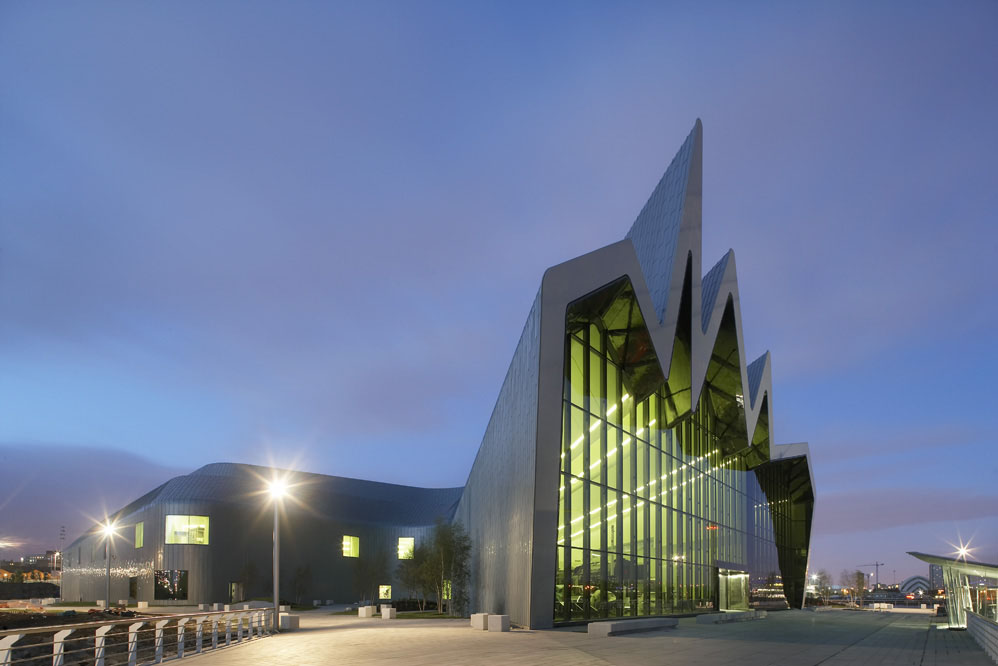
The design team used three-dimensional software to work out the specifics of the structure required to support such a complex form. The architect defined the inner and outer envelope in CATIA, and Buro Happold used Rhino to visualize and analyze their structural design. They articulated the connections between members with Tekla, a program also used by the steelwork fabricator.
The Riverside Museum received a Structural Steel Design Awards 2010 Certificate of Merit. This award is sponsored by The British Constructional Steelwork Association Ltd and Corus Long Products.
Supporting an expressive design by Zaha Hadid is surely no easy feat, but careful collaboration between the architect Hadid and engineer Buro Happold ensured that attention will remain on the building’s form and exhibitions, rather than the sleight of structure just beneath its surface. Thanks to its seeming simplicity, the building remains still and stable while appearing to be in constant motion, much like the locomotives, cars, and buses it was built to house.

Murrye Bernard
Murrye is a freelance writer based in New York City. She holds a Bachelor's degree in Architecture from the University of Arkansas and is a LEED-accredited professional. Her work has been published in Architectural Record, Eco-Structure, and Architectural Lighting, among others. She also serves as a contributing editor for the American Institute of Architects' New York Chapter publication, eOculus.
Website: www.murrye.com




























